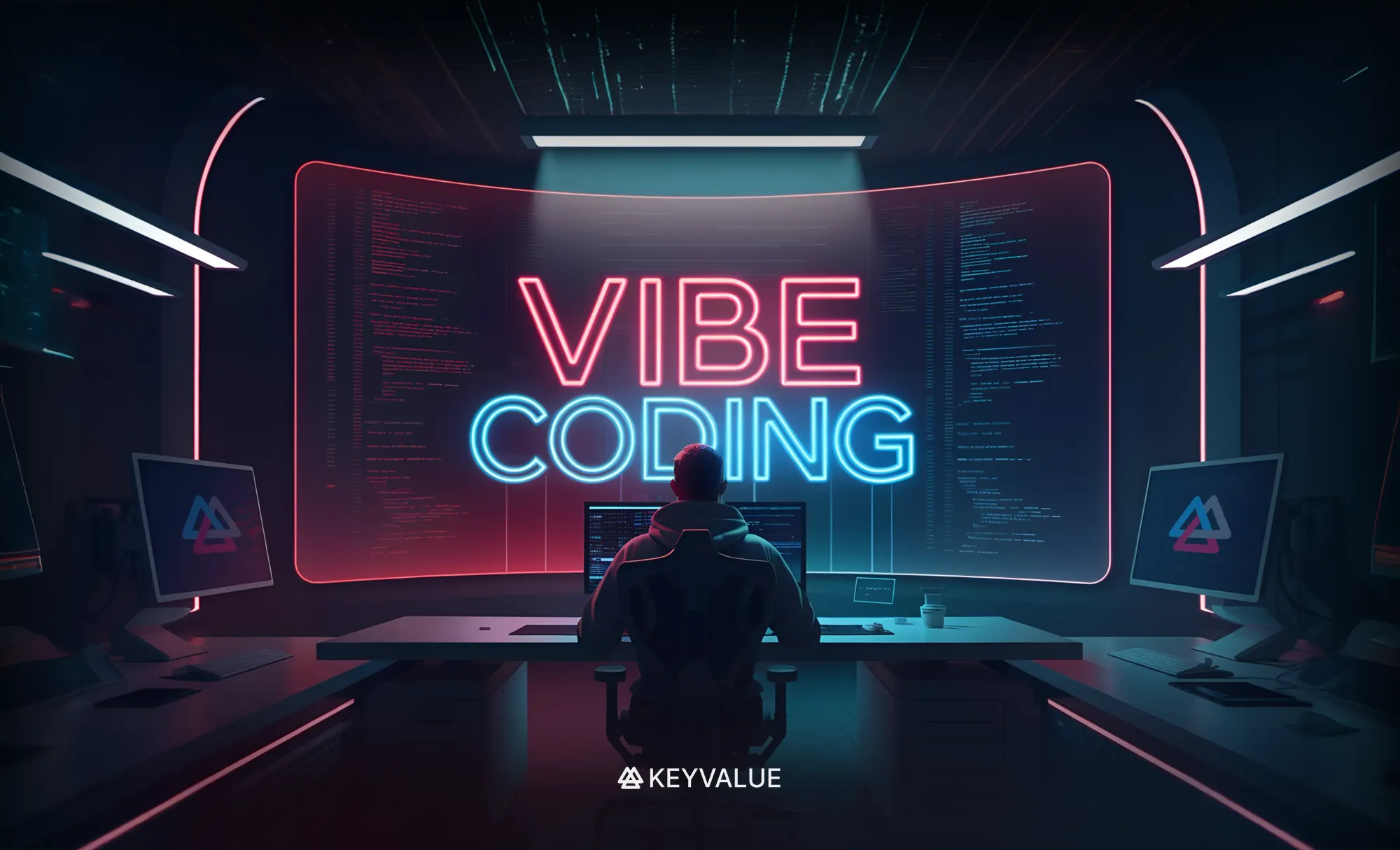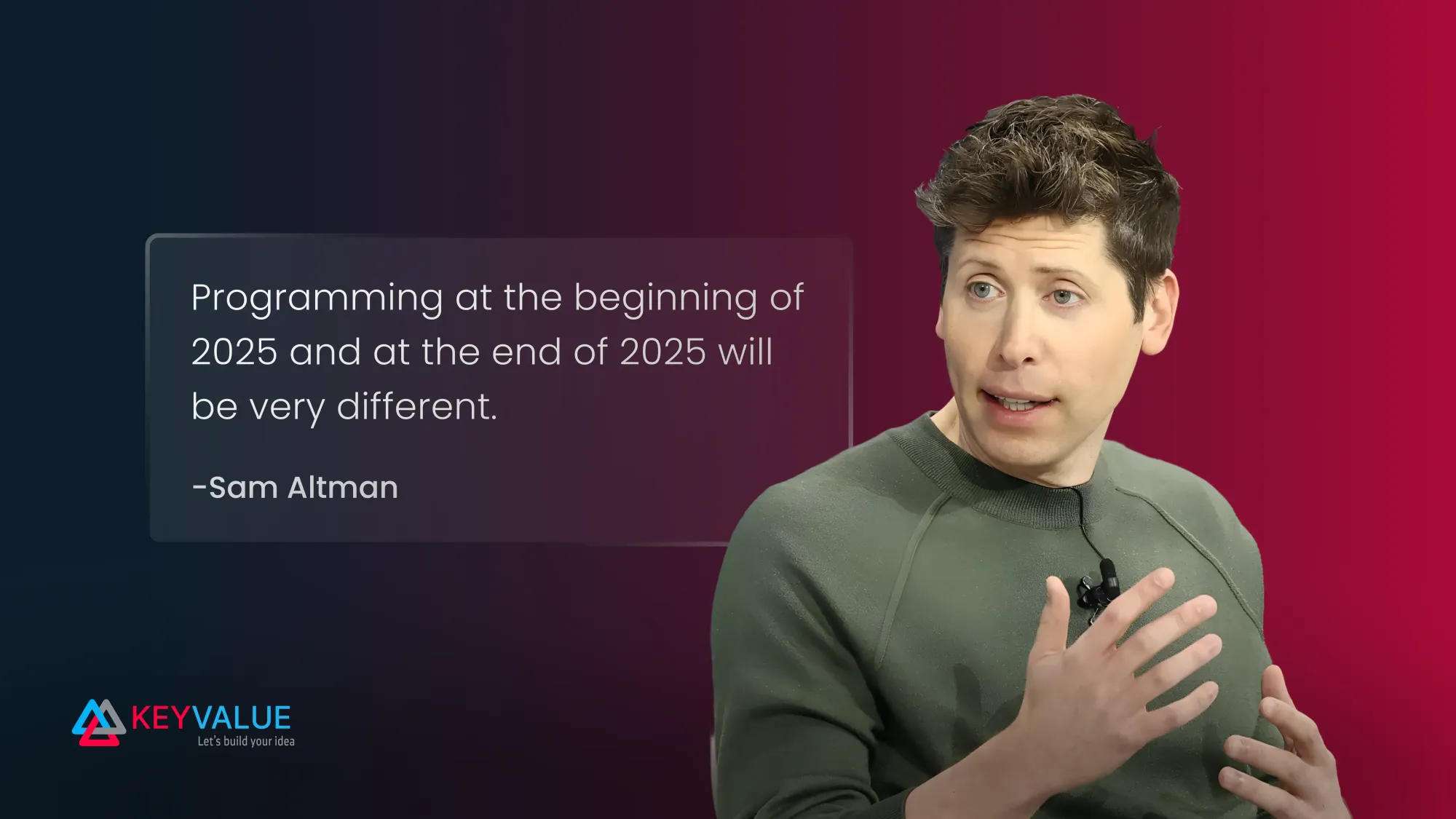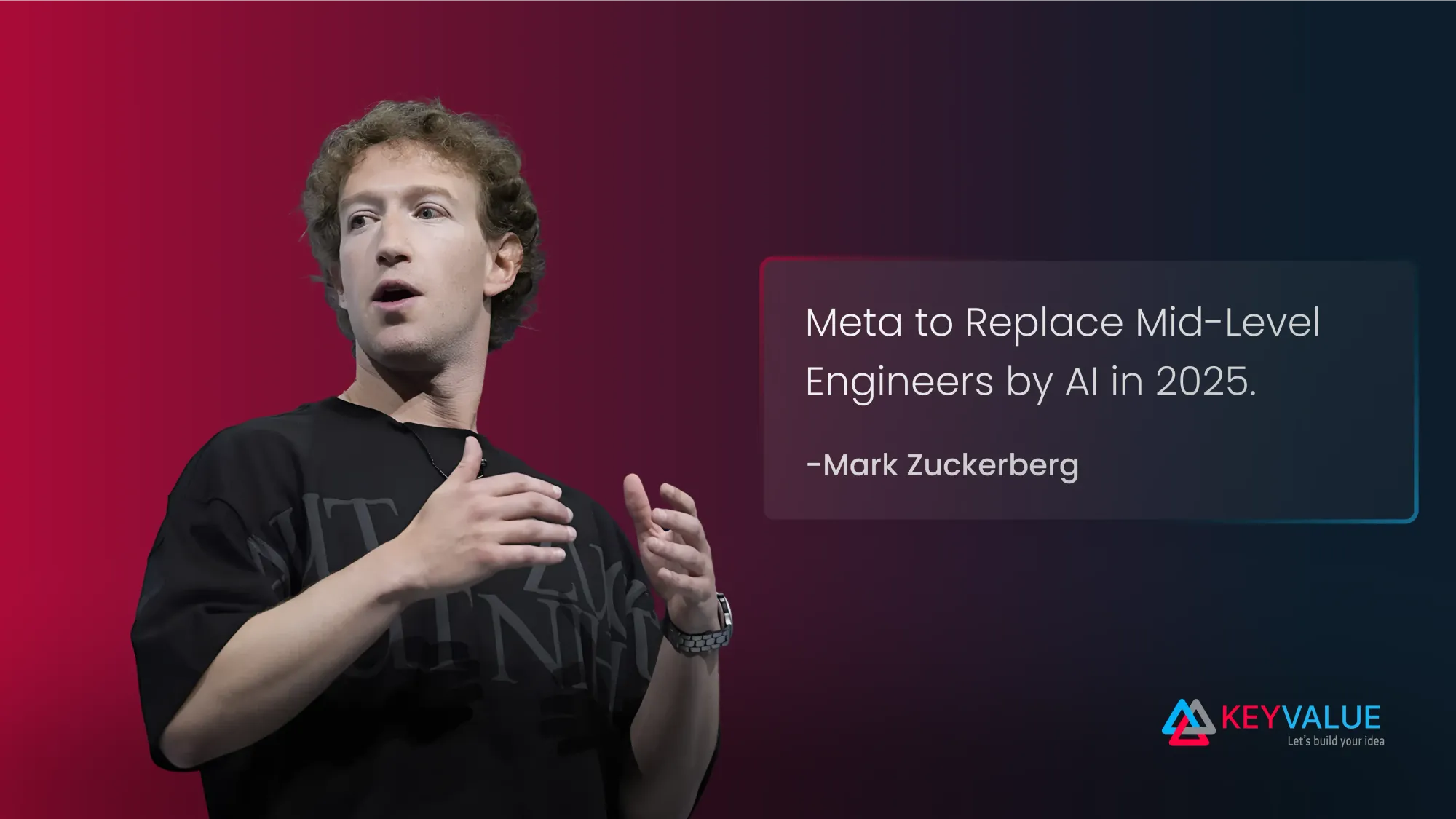
Highlights
- Vibe coding means telling an AI what you want and letting it write the code, a term coined by Andrej Karpathy.
- It is trending because bigger language models, tools like Replit Agent and Cursor, and the need for speed make coding from plain-language prompts easy for anyone.
- Everyone from absolute beginners and startup founders to tech giants such as Meta and GitHub is already using vibe coding for rapid prototypes and production features.
- The approach delivers fast results and broader access, but reviewers warn about messy code, security gaps and over-reliance on AI.
Silicon Valley is buzzing with a new term: “vibe coding.”
"It's not really coding — I just see stuff, say stuff, run stuff, and copy-paste stuff, and it mostly works."
That’s how Andrej Karpathy, computer scientist and OpenAI co-founder, described vibe coding in a viral post on X (formerly Twitter).
With AI transforming writing, design, and now coding, why not let AI handle the entire process? Just as we generate images with simple text prompts, vibe coding lets developers build software by instructing AI in plain English.
This shift challenges the traditional idea of coding. Instead of meticulously crafting every line of code, developers rely on AI tools to do the heavy lifting. But is vibe coding the future of programming—or just another passing trend?
Let’s dive into its impact on industries, engineers, and the future of software development.
What is vibe coding?
Simply put, vibe coding is coding with AI. The term, coined by Andrej Karpathy, means "fully giving in to the vibes." It’s about using AI-powered coding assistants like Cursor, Composer, and Sonnet to handle the heavy lifting, allowing developers to build software faster and more efficiently.
Karpathy’s viral tweet perfectly captures the essence:
There's a new kind of coding I call "vibe coding", where you fully give in to the vibes, embrace exponentials, and forget that the code even exists. It's possible because the LLMs (e.g. Cursor Composer w Sonnet) are getting too good. Also I just talk to Composer with SuperWhisper…
— Andrej Karpathy (@karpathy) February 2, 2025
You tell the AI what you want, and it generates the code. If something breaks, you just feed the error message back into the AI until it works. Sounds almost too good to be true, right?
But like anything, there’s a catch. Let’s dive deeper into Vibe Coding and explore what it really means.
Why is vibe coding trending?
Karpathy’s tweet sparked the conversation, but the hype around vibe coding goes way beyond a single social media post. So, why is everyone talking about it?
Here’s the deal:
AI is getting seriously powerful
Advancements in Large Language Models (LLMs) now allow AI to generate usable code from simple prompts. Tools like Replit Agent and Cursor Composer are pushing the boundaries of AI-assisted coding.
Coding is more accessible than ever
Vibe coding lowers the barrier to entry—you don’t have to be a seasoned programmer to start building. As Amjad Masad, CEO of Replit, noted, "75% of Replit customers never write a single line of code."
Speed is everything
In a world where everyone wants things done yesterday, vibe coding enables faster prototyping and rapid iterations.
The big players are all in
When figures like Sam Altman and Mark Zuckerberg start talking about the future of AI in software engineering, people pay attention.
AI-powered tools are already revolutionizing developer productivity—dive in to learn more.

How vibe coding works: A simple breakdown
Vibe coding might sound complex, but it's actually pretty simple. Think of AI as your coding assistant, ready to turn your ideas into reality.
Here's how it works:
- Describe what you want
Forget complex syntax—just tell the AI what you need. Instead of writing code for a button, simply say, "I want a red button that says 'Click Me.'" - AI generates the code
AI-powered tools take your description and write the necessary code—handling the heavy lifting for you. - Check & refine
Test the code, then tweak it by giving simple instructions like, "Make the button bigger" or "Change the font." The AI fine-tunes it to match your vision. - Repeat until perfect
Keep refining until your code does exactly what you need—no deep coding knowledge required.
In short, vibe coding lets AI translate your ideas into working software—effortlessly.
The hottest new programming language is English
— Andrej Karpathy (@karpathy) January 24, 2023
Vibe coding vs. traditional coding
How does vibe coding compare to traditional coding? Let’s break it down:
| Feature | Vibe Coding | Traditional Coding |
|---|---|---|
| Code Generation | AI writes the code based on your instructions. | You manually write every line of code. |
| Skill Level | Easy to start, even with little coding knowledge. | Requires a strong grasp of coding languages and principles. |
| Speed | Faster for prototyping and quick tests. | Can take longer, especially for complex projects. |
| Debugging | AI helps fix errors based on your feedback. | You must manually identify and fix bugs. |
| Understanding | May not fully understand how AI-generated code works. | Full control and deep understanding of your code. |
Who’s using vibe coding? More people than you think
Vibe coding isn’t just for one type of developer—it’s attracting a diverse group of people who are experimenting, innovating, and even building real products with AI. Let’s break down who’s vibing with code:
The total beginner
New to coding? No problem. Vibe coding is a game-changer for those with zero programming experience. It helps turn ideas into reality—fast. As Amjad Masad, CEO of Replit, points out: “75% of Replit customers never write a single line of code.”
The AI-assisted pro
Even seasoned developers are leveraging vibe coding to automate repetitive tasks, quickly prototype, and focus on the bigger picture—design and architecture. They’re still in control, but AI handles the heavy lifting.
The startup founder
For startups, speed is everything. Vibe coding accelerates product development, helping founders test and launch ideas faster than ever. As Misbah Syed, founder of Menlo Park Lab, puts it: “If you have an idea, you're only a few prompts away from a product.” Menlo Park Lab is already using vibe coding to build generative AI consumer applications like Brainy Docs.
The tech giants
It’s not just startups—big companies are diving in too. Meta’s Mark Zuckerberg has hinted that AI could soon handle tasks traditionally done by mid-level engineers. Meanwhile, GitHub Copilot is already helping developers work smarter and faster.
The AI app builder
A software engineer who claims to be the first vibe coder uploaded a video showing how he built an app in just 20 minutes using vibe coding. Check out his video here.

Examples of companies using vibe code:
Replit: Using AI to allow users to build an app with a simple prompt
GitHub: Using Copilot, an AI pair programmer that provides code suggestions and autocompletions
Amazon: Using CodeWhisperer, an AI coding assistant, used internally and offered to AWS customers.
Is vibe coding good or bad? Let’s look at the real story
Vibe coding is the hot new thing—but is it actually a game-changer, or just hype? Let’s break it down.
Imagine this: AI can now generate code from just a few instructions. Got an idea? You’re only a few prompts away from a working product. AI tools are making software development faster and more accessible than ever.
But here’s the catch—this isn’t all sunshine and rainbows. As AI researcher Harry Law from the University of Cambridge puts it, “Ease of use is a double-edged sword."
The good side of vibe coding
Super fast and easy
Need a prototype? AI can generate code in seconds, helping you test ideas and iterate way faster than traditional coding.
Anyone can code
With AI-powered tools, even non-coders can build software. It’s making programming more accessible than ever.
Your code buddy is an AI
No more long nights struggling with syntax—AI acts as a coding assistant, helping you write, debug, and refine code effortlessly.
The problems with vibe coding
Messy code
A senior Microsoft software engineer told Business Insider that vibe coding is “a little overhyped” because AI often generates messy, hard-to-manage code.
Security risks
AI-generated code can introduce vulnerabilities. If you don’t carefully review it, hackers could exploit weaknesses in your app.
You don’t learn anything
Relying too much on AI means you may never truly understand how your code works—leading to over-dependence on AI assistants.
How vibe coding will affect engineers and industries
Vibe coding has the potential to transform software development and reshape various industries. Here’s what to expect:
- Shift in roles
Software engineers may transition from hands-on coding to roles like "prompt engineers" or "AI wranglers," focusing more on guiding and overseeing AI-generated code rather than writing every line themselves.
- Increased demand for AI skills
Companies will prioritize professionals with AI and machine learning expertise to develop, refine, and maintain the AI-powered tools that drive vibe coding.
- Accelerated innovation
Faster prototyping and iteration will fuel rapid innovation across industries, enabling the development of new products and services at unprecedented speeds.
- Impact on education
Educational institutions may need to revamp their curricula to incorporate AI-assisted coding techniques, ensuring that future engineers understand both traditional coding and AI-driven development.
Criticisms of vibe coding
Despite its potential benefits, Vibe Coding has faced criticism from some industry experts:
- Overhyped: Many people praise vibe coding, but others say it's just a short-lived trend and not the future. Even Karpathy admitted that AI sometimes "can't fix a bug."
- Lack of control: Andrew Chen, an A16z venture capitalist, expressed frustration with the lack of control and precision when using AI code generation tools.
- Synthetic user research: Some worry about the rise of "vibe-researching," or synthetic user research, where AI-generated personas replace real users, potentially leading to biased and inaccurate insights.
random thoughts/predictions on where vibe coding might go:
— andrew chen (@andrewchen) March 9, 2025
- most code will be written (generated?) by the time rich. Thus, most code will be written by kids/students rather than software engineers. This is the same trend as video, photos, and other social media
- we are in the…
Top tools for vibe coding
Vibe coding thrives on AI-powered tools that streamline the development process. Here are some of the most popular ones in the tech community:
-
Replit Agent – A cloud-based IDE with AI-driven code completion and generation.
-
Cursor – An AI coding assistant that helps users write, explore, and modify code, often paired with Anthropic’s Sonnet model.
-
GitHub Copilot - A widely used AI pair programmer offering smart code suggestions and autocompletion.
-
Figma AI - AI-powered tools for automating UI/UX design within Figma.
-
Uizard & Webflow - No-code and low-code platforms that leverage AI for design assistance and rapid prototyping.
Future of vibe coding: Will AI replace software developers?
AI is transforming software development, but will it completely replace developers? Not likely—at least not anytime soon. Here’s why:
- AI has limitations – AI-generated code isn't always perfect. It can be inefficient, contain errors, or even misunderstand requirements. Human oversight is still essential.
- Creativity matters – Building software isn’t just about writing code; it requires creativity, problem-solving, and critical thinking—skills AI struggles to replicate.
- Domain expertise is key – Many projects require deep industry knowledge that AI simply doesn’t have.
- Ethical concerns – AI-generated code can introduce security risks, bias, and privacy issues, which developers must carefully manage.
Rather than replacing developers, AI is enhancing their abilities—speeding up workflows, automating repetitive tasks, and allowing engineers to focus on high-level problem-solving.
I designed, built & submitted a new app (that is actually good) in < 4 hours. AI is Wild pic.twitter.com/2Wl6codJ1y
— Matt (@MattCowlin) March 6, 2025
Conclusion: Embrace the vibe, but stay grounded
Vibe coding is revolutionizing software development, making it faster and more accessible than ever. But while AI unlocks exciting new possibilities, it’s not a replacement for solid fundamentals.
To truly make the most of vibe coding, developers need to balance AI assistance with strong coding principles, thoughtful design, and a focus on real user needs. AI can handle the heavy lifting, but human expertise ensures that what’s built is reliable, scalable, and impactful.
The future of coding isn’t just AI-driven—it’s a collaboration between human creativity and machine efficiency. So, embrace the vibe, but stay in control.
Frequently Asked Questions
1. What is vibe coding?
Vibe coding is AI-assisted programming where you describe a feature in normal language and the model generates the code.
2. How does vibe coding work?
Describe the feature, let the AI write code, test it, give short tweaks, and repeat until you are happy.
3. Which tools support vibe coding?
Popular picks include Replit Agent, Cursor, GitHub Copilot, Amazon CodeWhisperer, Figma AI and other no-code helpers.
4. Can beginners use vibe coding?
Yes. 75% of Replit users never write a single line of code, yet they ship projects with AI help.
5. What are the main benefits?
You get prototypes in seconds, lower the skill barrier, and have an AI partner that handles tedious syntax and debugging.
6. What are the key risks?
AI may produce messy or insecure code, and heavy reliance can stop developers from learning core skills.

